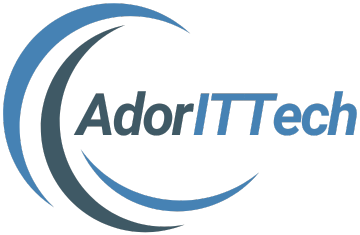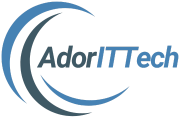In this dynamic world of software development, the backbone behind every application runs is the backend. From dealing with databases and making APIs to making sure data security and scalability, backend frameworks have become an integral part of a modern developer’s toolkit. Given that 2025 is emerging as a watershed year in tech, open-source backend frameworks are making a huge impact in building fast, reliable, and scalable applications.
Why open source? It is inexpensive, customizable, and community-driven to improve these frameworks. Here’s a breakdown of the top five backend frameworks in the most Backend Languages of 2025: Python, Node.js (JavaScript), Java, PHP, and Ruby—and how they appeal to the startup, enterprise, and everything in between.
Why Backend Frameworks Matter?
Streamlining Backend Development
Backend frameworks simplify server side tasks by including pre-built modules and tools such as:
- Interacting with the database
- Creating and managing APIs
- Managing authentication and user session
- Security and Data Integrity
Unless frameworks exist, developers will be writing redundant codes regarding those basic functionalities that slows down their development and raises the chances of errors.
The Power of Open Source
Open-source frameworks dominate the backend development primarily because they are free to use, and full access to the codebase allows developers to modify the software according to their needs. Large active communities provide resources, tutorials, and updates to keep the framework relevant and secure.
Top Backend Frameworks for Python
1. Django: A full-Comprehensive framework.
It is the new all-in-one ultimate solution for the high-performance Python developer. Django bases its development on the DRY principle, that is, it does not have to waste any developer’s time writing repetitive code; the developer can only focus on features.
Key Features of Django:
- Built-in security: Django has protection against SQL injection, cross-site scripting (XSS), and cross-site request forgery (CSRF).
- Rapid Development: Authentication, routing, and admin panels are pre-built modules that speed up the delivery of projects.
- Proven Scalability: Instagram and Pinterest are examples of using Django to support millions of users per day.
Best Use Cases:
- Content-intensive website.
- Social media applications.
- E-commerce applications.
2. Flask: Lightweight and Flexible
Flask is a minimalist Python web framework useful for developers who prefer minimalism and personalization. Unlike Django, it is opinionated, meaning it does not come with built-in components for every task. Therefore, it’s perfect for small projects or developers who want more control over the architecture of their application.
Key Features of Flask:
- Flexibility: Developers can use any libraries and tools of their choice.
- Extensive Ecosystem: Flask supports many third-party extensions for database integration, authentication, and much more.
- Scalable Architecture: Flask can be used for both small and large applications depending on the extensions added.
Best Use Cases:
- RESTful APIs
- Prototyping and lightweight web apps
- Custom backend solutions
Top Backend Frameworks for Node.js (JavaScript)
1. Express.js: The Lightweight Giant
Express.js is the most prevalent Node.js backend framework today. It is characterized with simple and extremely fast performance for highly scalable web and mobile applications.
Key Features of Express.js
- High Performance: Express.js will excel in the real-time applications mainly because of the non-blocking I/O model offered by Node.js.
- Middleware Support: Extends functionality with the help of third-party middleware, making it extremely easy.
- RESTful API Development: Express.js is the popular choice for creating RESTful services.
Best Use Cases
- Real-time applications including chat systems, online gaming.
- Single-page applications (SPAs)
- Internet of Things (IoT) systems
2. NestJS: Structured and Scalable
NestJS is a progressive Node.js framework that uses TypeScript, making it strongly structured and very ideal for large enterprise applications. Its modular architecture makes developing and scaling a large application very easy.
Some of the notable features of NestJS:
- Integration with TypeScript: Ensures type safety and minimizes runtime errors.
- Microservices: Optimized for distributed systems.
- Built-in tools: Provides solutions for testing, authentication, etc.
Best Use Cases
- Enterprise applications
- Scalable APIs
- Web applications that have a complex backend structure
Top Backend Frameworks for Java
1. Spring Boot: Enterprise-Ready in Backend Frameworks
Spring Boot is a very popular Java-based framework for developing solid, scalable back-end systems. It is built with microservices in mind to minimize the effort of setting up a Spring application, allowing developers to focus more on business logic.
Key Features of Spring Boot:
- Microservices-Friendly: This allows the creation of modular, distributed systems.
- Production-Ready: It comes with tools for monitoring, security, and performance management.
- Cloud Integration: Seamless integration with all cloud platforms AWS, Azure, etc.
Best Use Cases
- Banking and financial systems
- Enterprise-grade applications
- High-traffic web platforms
2. Micronaut: Fast and Lightweight
Micronaut is another framework that is created for Java with the best-suited optimization for microservices and serverless architecture. With low memory usage and fast startup, it becomes more suitable for cloud-native applications.
Micronaut Key Features
- Ahead-of-Time Compilation: This decreases runtime overhead and enhances performance.
- Support of Reactive Programming: Best-suited for building event-driven systems.
- Built-In Tools: It includes configuration, service discovery, and fault tolerance features.
Best Use Cases
- Serverless applications
- Microservices architecture
- Cloud-based projects
Top Backend Frameworks for PHP
1. Laravel: The Modern PHP Framework
Laravel is the best and the leading framework that has taken PHP development to a new level. With clean syntax and the features it offers, it simplifies tough backend tasks like routing, caching, and authentication.
Key Features of Laravel:
- Blade Templating Engine: It simplifies the rendering of dynamic content.
- Eloquent ORM: It makes interactions with databases easy and efficient.
- Strong Ecosystem: Tools such as Forge and Vapor enhance the scalability of Laravel.
Best Use Cases:
- SaaS applications
- E-commerce platforms
- Content management systems
2. Symfony: Flexible Framework
Developers who wish to have some amount of customization use Symfony because it is extremely flexible. Their architecture is mainly based on reusable components, therefore perfect for intricate applications of this magnitude.
Main Features of Symfony
- Reusability: Parts of Symfony could be used by any other program/using framework.
- Tool Integration: Implements in-built modules of caching and templating alongside building forms
- Scalable: Optimised for enterprise solutions
Best Use Cases
- API development
- Enterprise software
- Projects requiring heavy customization
Top Backend Frameworks for Ruby
1. Ruby on Rails Convention Over Configuration
Ruby on Rails, or RoR, is one of the more mature frameworks available, with a focus on convention over configuration to allow developers to focus on the features rather than architectural decisions. It is also very user-friendly and has an active community.
Key Features of Ruby on Rails:
- Active Record: Simplifies database queries and relationships.
- Scalable: Optimized for vertical scaling, can easily scale to support millions of users through tools such as Sidekiq.
- Very Strong Community: Highly comprehensive plugins and gems that allow fast development
Best Use Cases
- MVP/Minimum Viable Product
- E-commerce
- Social media sites
2. Sinatra: A Lightweight Ruby Framework
Sinatra is a small framework for simple developers. He doesn’t give everything that Rails can offer, but it’s excellent for small applications and APIs.
Key Features of Sinatra:
- Fast Setup: Requires minimal configuration.
- User-Friendly: Build only what you need.
- Performance: Great for light applications.
Best Use Cases:
- RESTful APIs
- Prototyping
- Microservices
Why These Backend Frameworks Lead in 2025
Scalability
Whether using Django’s ORM or Spring Boot microservices, they support high traffic as well as data volumes that increase exponentially.
Flexibility
Choose to go with Laravel all-in-one approach or use the minimalist framework that is Flask: these allow freedom to accommodate almost any requirement on a project basis.
Community Support
All these frameworks benefit from a strong community offering resources, periodic updates, and support for fresh developers.
Conclusion
Modern applications depend on the backend frameworks. And in 2025, the open-source framework is in the lead. From building real-time apps using Node.js to building a scalable enterprise solution using Spring Boot or building data-driven applications with Django, it all makes the difference by having the right framework.
By knowing the strengths and the best use cases of these frameworks, you could then choose one that aligns with your goals and scales along with your application.
FAQs
1. Scalability: What is the most scalable backend frameworks?
Spring Boot as well as Node.js is very scalable. It is advantageous for both enterprises and real-time applications.
2. The best framework for startups?
Both Laravel and Django are excellent choices for startups because they offer rapid development capabilities with several pre-built features.
3. Is Ruby relevant in 2025?
Yes, Ruby on Rails is still a good choice for building user-friendly, scalable applications.
4. Why popular are the Python frameworks like Django and Flask?
Python simplicity is combined well with all Django features and flexibility of Flask, which makes them the choice for various projects.
5. Can I have more than one backend framework per project?
In microservices architecture, more than one could be used for specific services to optimize performance. Yes, with microservices architecture, frameworks can actually be used to address specific services that can optimize performance.


